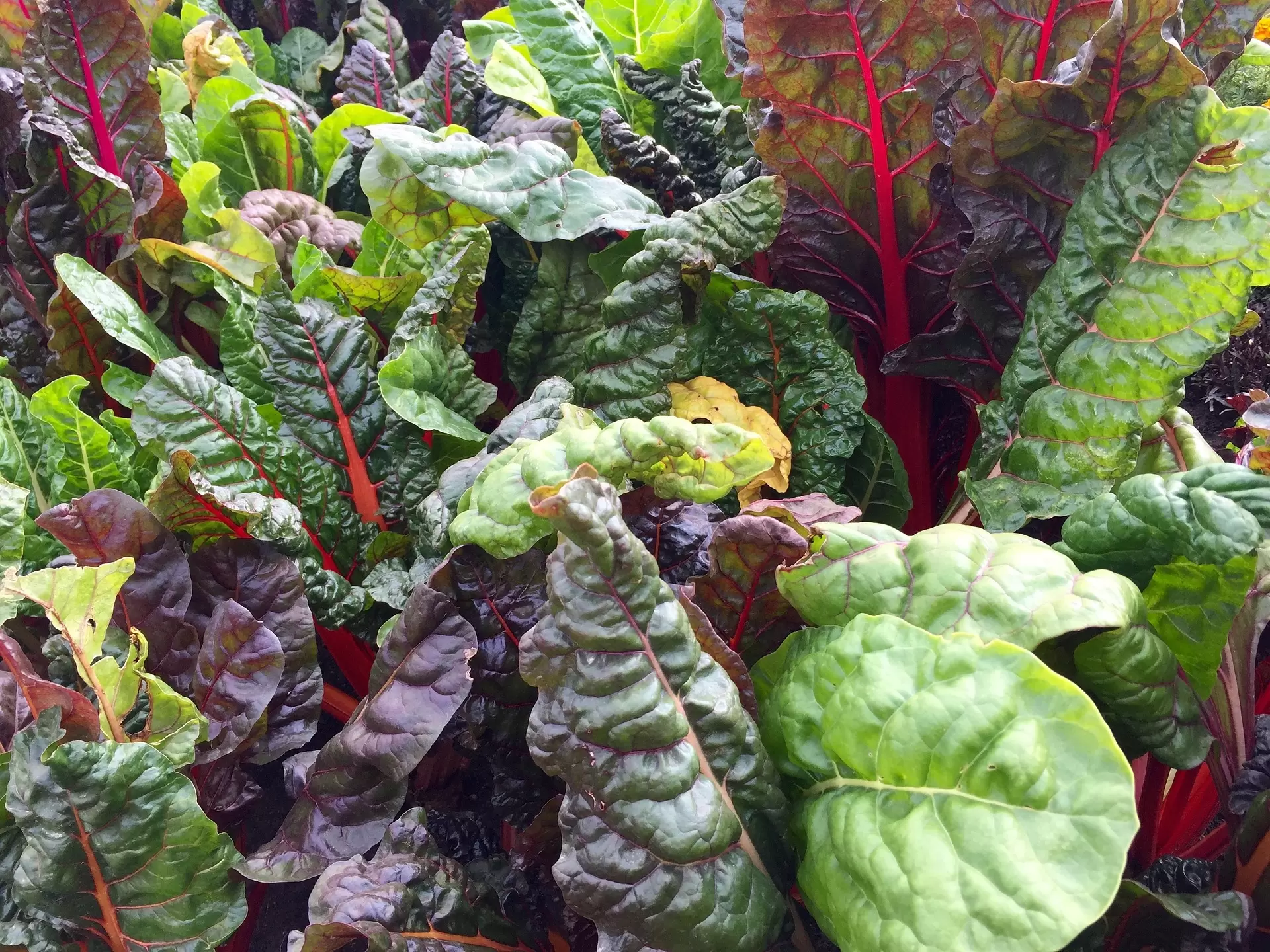

Swiss Chard, also known as Spinach Beet, or Leaf Beet, is an attractive and colourful leafy vegetable, which is even easier to grow than spinach and can be harvested all year round. Swiss Chard can be grown in containers, too.
Swiss Chard is highly beneficial for bone, heart and digestive health and has highly antioxidant properties. However growing Swiss Chard in the UK is not just done for its tasty and nutritional properties, but also as an ornamental plant. Its beautiful foliage can beautify your vegetable patch.
Read on to learn more about how to grow Swiss Chard. If you need assistance with growing Swiss Chard, you can always reach out for help from our Allotment Online community.
When growing Swiss Chard, you can choose to grow different varieties, which are based more on their looks rather than their flavour profile, which remains similar. Some popular varieties include:
Sow Swiss chard seeds about an inch deep in rows. Once the seedlings are big enough to handle, thin them out so the remaining plants are spaced roughly 10 inches apart. This gives them room to grow strong and healthy. For a longer cropping season, you can also sow a second row during the summer, which will provide an earlier harvest the following year.
If you’ve started growing Swiss chard indoors, transplant the seedlings into the soil once they’re about 5cm tall and have been hardened off for a couple of weeks. Chard can also be grown in containers, just make sure to choose pots at least 25cm deep and 40cm wide to give the roots enough space.
Water regularly, especially during dry spells, and keep the soil weed-free. Adding a layer of mulch will help retain warmth and moisture while keeping weeds at bay. Slugs can sometimes cause problems for young plants, but once the plants establish, this usually stops being an issue.
You can pick young leaves for salads, which also encourages new growth. To protect your plants during colder, wetter months, pack straw around the crown and cover them with horticultural fleece or cloches.
Keep an eye out for signs of bolting, when the plant begins to send up a flower stem. If this happens, cut the stem off as soon as possible. Once flowering begins in earnest, Swiss chard plants will stop producing leaves.
You can start sowing seeds thinly from March onwards, choosing a sunny, well-drained spot in the garden. To give your plants the best start, it helps to dig in plenty of organic matter during the autumn before sowing.
If the weather is on the cooler side, you can get a head start by sowing indoors as early as February. Once the soil has warmed, outdoor sowings can be made from April right through until July.
For those who enjoy tender baby leaves, try sowing small batches every few weeks until August. This way you’ll have a regular harvest to pick and enjoy throughout the summer.
If you’re wondering when to pick Swiss chard, the timing depends on when you sowed your seeds. In most cases, you can begin harvesting from June and continue right through until October. Later sowings will keep you supplied into the following spring.
Swiss chard is a classic “cut-and-come-again” crop, meaning you can enjoy multiple harvests from the same plant. Start by picking the outer leaves first and gradually work your way towards the centre. Don’t wait until every leaf is large and mature, picking smaller leaves encourages the plant to keep producing. When harvesting, take care not to disturb the crown or roots.
With good care, you should be able to keep harvesting leaves until the following June, by which time the plants will start to tire. A light feed of fertiliser can give them a boost, but your later sowings should also be ready to take over.
Not only is Swiss chard productive, but it also brings vibrant colour to the allotment or garden. Its bright stems and glossy leaves add a cheerful splash, especially during the winter months when other beds can look bare.
Younger, smaller leaves can be eaten raw in salads, and larger, more mature leaves can be cooked. The stalks are edible too; they just take a little longer to cook.
Ready to grow Swiss Chard in your allotment? Allotment Online offers expert guidance and a vibrant community of growers to help you succeed. If you’re new to growing Swiss Chard, we’re here with tips, encouragement, and answers.
Join today to share your stories, get advice from fellow gardeners, and enjoy the satisfaction of harvesting fresh, homegrown produce.
Got a question or success story? We’d love to hear it! Sign up and become part of the community!
Are you looking for tips on growing apples, peaches or squashes? Head to our Grow Your Own page, and we’ll answer more specific growing-related questions.